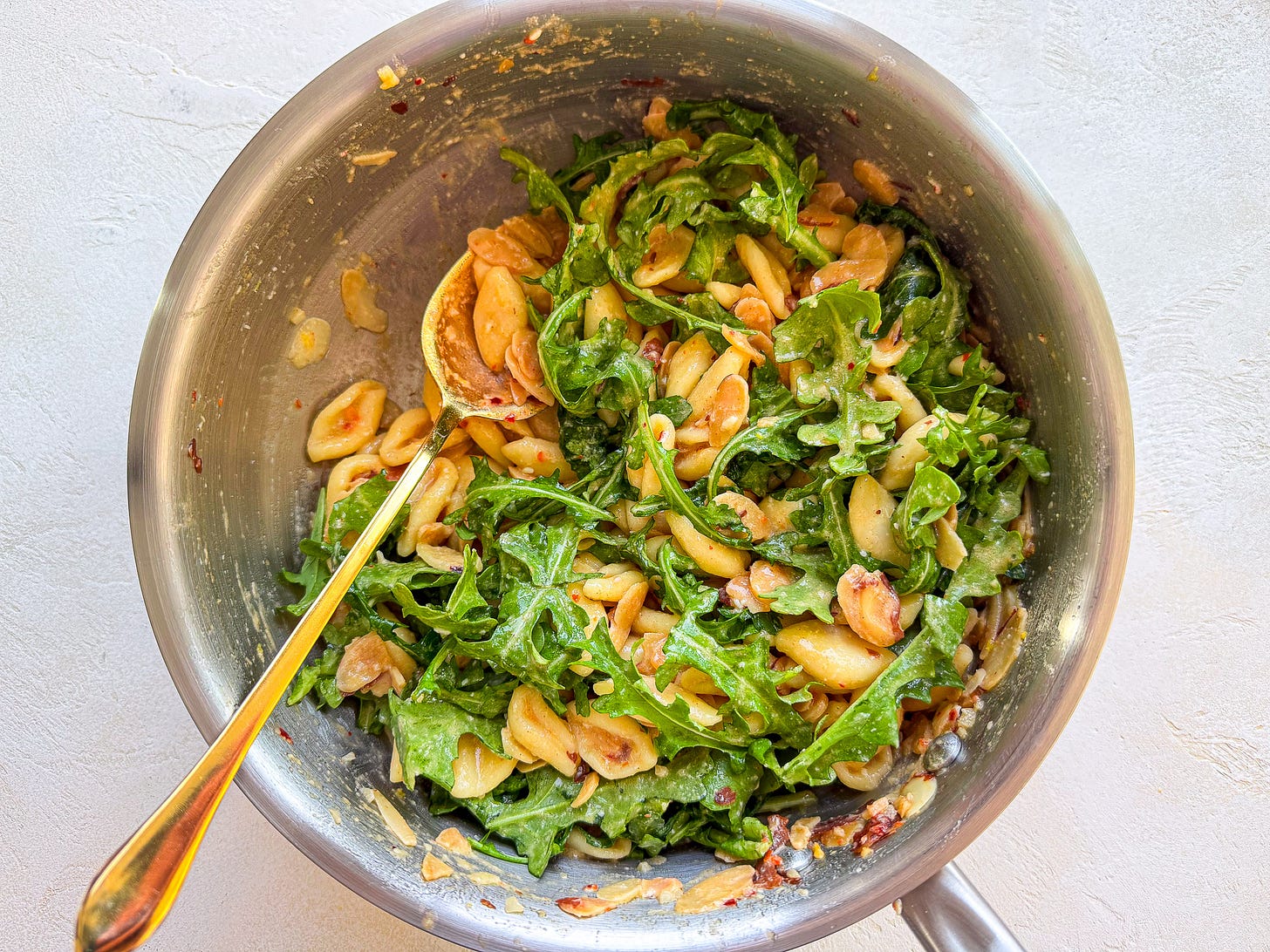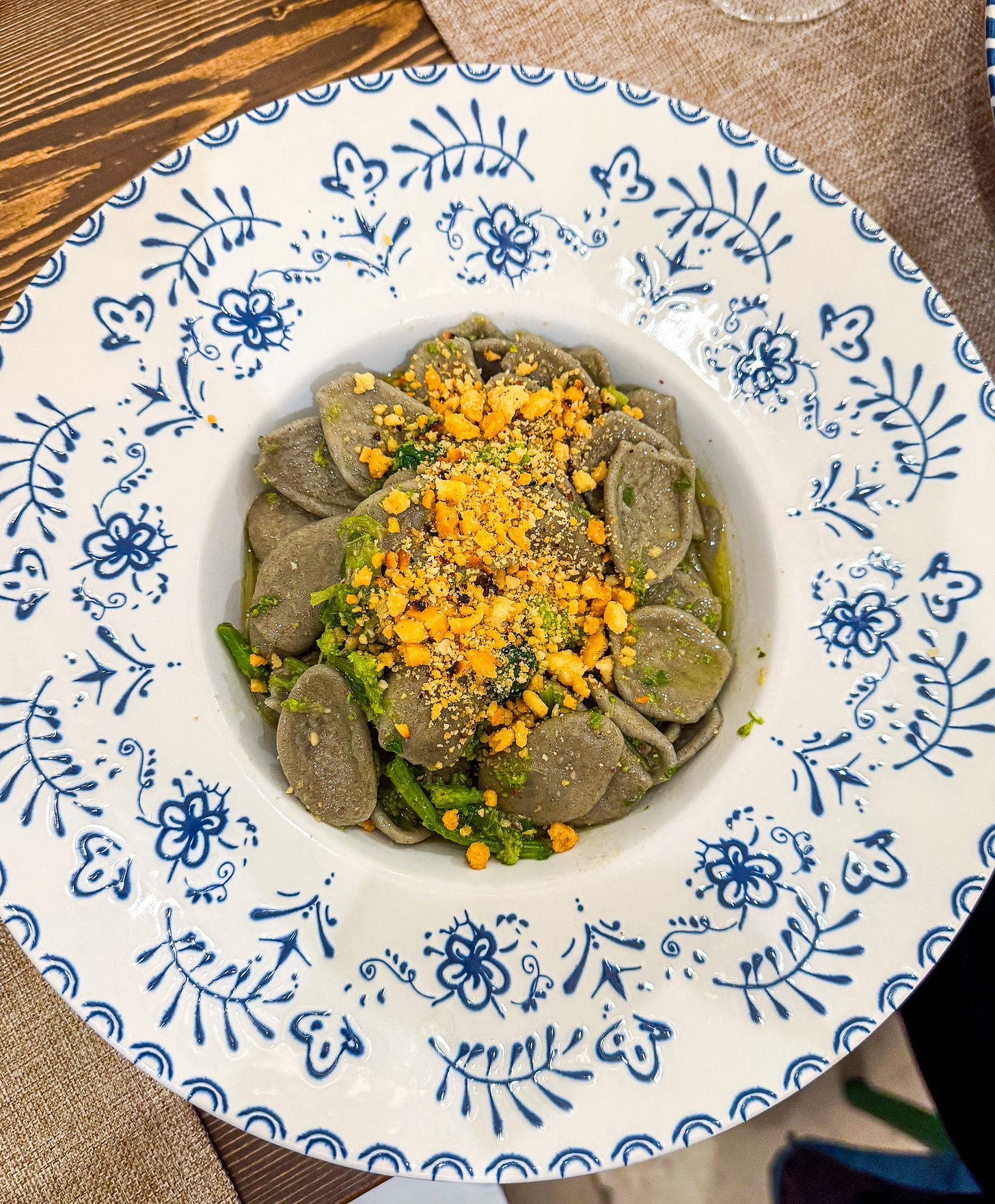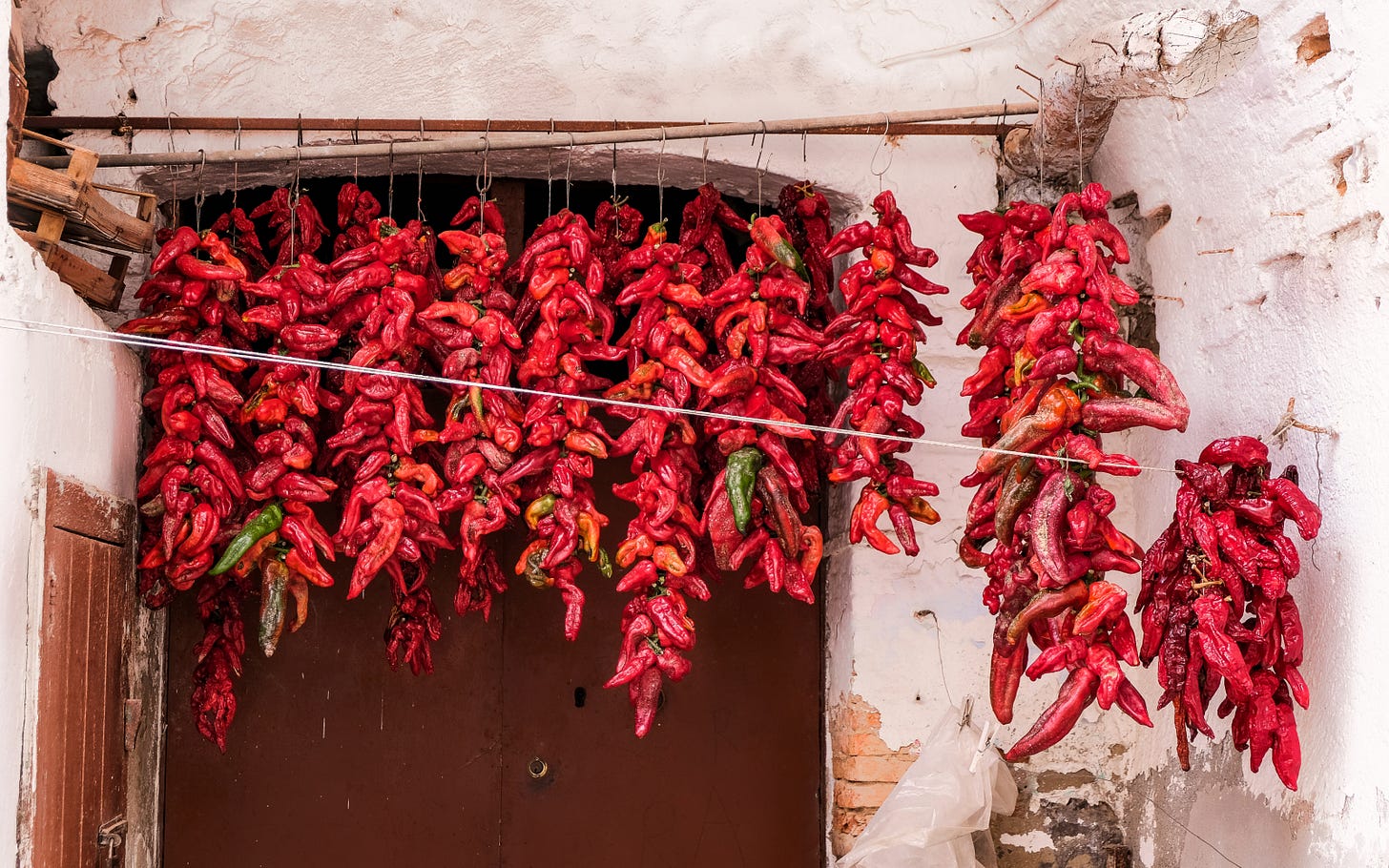scorze di mandorle, basilicata's adorable almond shells
pasta of the month 020
I often talk about pasta like it’s a living, breathing thing, an old friend with thoughts and feelings and very outspoken opinions. And if I were more scientifically inclined, I might try to convince you that pasta is, in fact, just like us, with its own taxonomic classifications. Because pasta is not one thing, but hundreds of things, and those things can, more or less, be categorized by what they look like and how they’re made. Most of these categories are familiar, with some pastas straddling multiple styles at once: pasta lunga (long pastas), pasta corta (short pastas), pasta ripiena (stuffed pastas), pastina (tiny pastas), and gnocchi (dumplings of various shapes and sizes). There is, however, another type of pasta that you might not have heard of, one that’s happy to mind its own business because it has nothing to prove as it’s just that good: strascinati.
The term “strascinati” (or “strascinate”) is used both as a general pasta classification and as the name of a few particular pasta shapes; the word means “dragged,” referring to shapes that are made by well, dragging, bits of dough across a surface by hand or with some sort of utensil.* You’ll find strascinati variations across southern Italy—orecchiette are the most famous example, though others look more like cavatelli of various sizes. Today I’m introducing you to one of the latter as our May Pasta of the Month: scorze di mandorle, Basilicata’s adorable “almond shells.”
Scorze di mandorle are not new to me—I’ve made them once or twice, many years ago—but in my search for more easy, egg-free shapes, I was delighted to stumble across them again. Like orecchiette, scorze di mandorle are made with durum wheat flour and water. Also like orecchiette, they’re formed using a table knife, which creates a rough surface on one side of the dough designed for capturing sauce. Unlike orecchiette, they are not inverted into an ear-like dome; instead, they resemble a slightly more open and pointed cavatello, a perfect imprint of—you guessed it—an almond shell.
I was initially drawn to scorze di mandorle for their simplicity and affordability, but now I’ve come to appreciate them as a hidden gem. Not only because they rarely grace today’s dinner plates, but also because of where they’re from—Basilicata, and particularly the city of Matera. Simply put, Basilicata is underrated. It’s the instep of Italy’s boot, nestled between Puglia, Calabria, and Campania, and straddles both the Tyrrhenian and Ionian seas. The landscape is exceptionally varied, with everything from dramatic mountain ranges and inactive volcanoes to sandy coastlines and dense forests. Its history is ancient; when it was under Roman occupation (and for centuries before), it was known as Lucania, and plenty of art and architecture from that period remains. And Matera, the region’s original capital, is among the oldest continuously inhabited cities in Europe, with evidence of occupation dating back to the Paleolithic era. It might not come as a surprise, then, that Basilicata is where pasta in Italy was first recorded.
Like the country’s other southern regions, Basilicata was historically poor and isolated, and so its food traditions champion rustic, scrappy cooking with backyard ingredients. Dishes rely heavily on fresh and preserved fish from the coastlines like anchovies, salt cod, sardines, and tuna; vegetables and legumes like tomatoes, potatoes, broccoli, chickpeas, and lentils; and other local staples like olives, wine, and durum wheat. Meat, although less common, also makes an appearance, particularly lamb and pork, as do typical southern Italian cheeses like ricotta, caciocavallo, cacioricotta (a harder, grate-able style of ricotta without the high salt content of ricotta salata), and pecorino.
As for pasta, all of Basilicata’s primary varieties are made from the aforementioned durum wheat. These include dragged shapes like orecchiette, tapparelle (larger, flatter orecchiette stretched by hand), strascinati (flat, ragged discs made with a knife, pictured above)**, and scorze di mandorle, as well as ferricelli (hollow tubes), frizzuli (hollow spirals), and lagane (wide, flat noodles). They’re all made on a wooden board called, in local dialect, an ‘mpastapan (from the Italian impasta pane, meaning “knead bread”), and typically dressed with some combination of garlic, olive oil, peperoncino, and local cheese. One particularly prized pasta dish also features breadcrumbs and dried Senise bell peppers fried in oil called peperoni cruschi.
In keeping with Basilicata’s traditional fare, I thought about pairing my scorze di mandorle with those curious, crispy peperoni cruschi, which I’d never heard of and look super delicious. But then I decided that 1) peperoni cruschi are difficult to come by, defeating the whole cheap-and-easy vibe I was going for, and 2) serving a pasta called “almond shells” with anything but almonds seemed totally absurd. So instead I took inspiration from the crunch of peperoni cruschi by using toasted, thinly sliced almonds, then gave the dish a springtime kick with a couple of handfuls of peppery arugula. The nuts make the whole thing texturally exciting and difficult to put down; on the flip side, if you’re not a fan of wilted arugula, feel free to chop it finely, parsley-style. You can, of course, skip my recommendation and serve this chewy, versatile pasta with anything you like.
*According to my pasta fairy godmother, Oretta Zanini de Vita, “the category assignments should often not be taken too literally: one man’s gnocchetto may be another man’s strascinato”—indeed, “it is practically impossible to make sense of the Babel of strascinati in the regions of southern Italy” and scorze di mandorle are categorized as “pasta corta,” even though the technique is almost identical to other strascinati variations.
**So as not to totally confuse you, here I’m referring to a particular pasta shape, pictured above, rather than the genre.
Scorze di Mandorle with Almonds & Arugula
Serves 2








